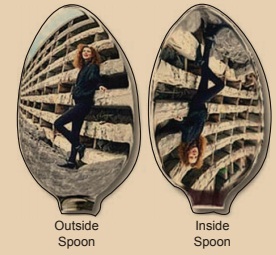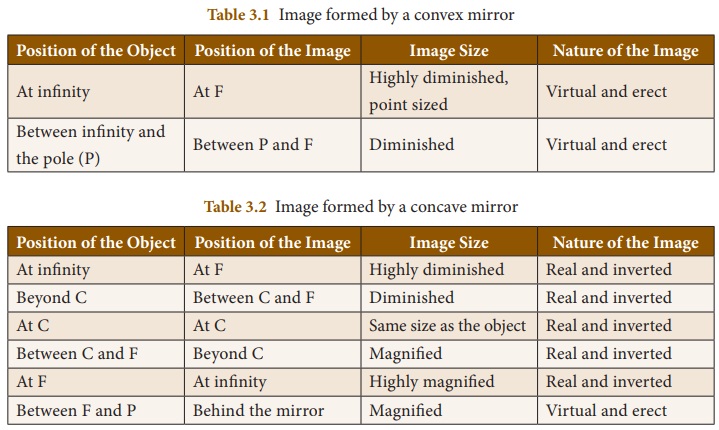Light | Chapter 3 | 8th Science - Images formed by Spherical Mirrors | 8th Science : Chapter 3 : Light
Chapter: 8th Science : Chapter 3 : Light
Images formed by Spherical Mirrors
Images formed by
Spherical Mirrors
Images
formed by spherical mirrors are of two types: real image and virtual image. Real
images can be formed on a screen, while virtual images cannot be formed on a
screen. Image formed by a convex mirror is alway serect, virtual and diminished
in size. As a result, images formed by these mirrors cannot be projected on a
screen.
The
characteristics of an image are determined by the location of the object. As the
object gets closer to a concave mirror, the image gets larger, until attaining
approximately the size of the object, when it reaches the centre of curvature of
the mirror. As the object moves away, the image diminishes in size and
gets gradually closer to the focus, until it is reduced to a point at the focus
when the object is at an infinite distance from the mirror. The size and nature
of the image formed by a convex mirror are given in Table 3. 1.
Concave
mirrors form a real image and it can be caught on a screen. Unlike convex
mirrors, concave mirrors show different image types. Depending on the position of
the object in front of the mirror, the position, size and nature of the image
will vary. Table 3. 2 provides a summary of images formed by a concave mirror.
You
can observe from the table that aconcave mirror always forms a real and
invertedimage except when the object is placed between the focus and the pole
of the mirror. In thisposition, it forms a virtual and erect image.
Activity 1
Take a curved silver spoon and see the image formed by it. Now,
turn it and find the image formed. Do you find any difference? Find out the
reason.

Answer:
Reason :
(i) The curved surface of the spoon acts as a reflecting
surface. But this reflecting surface is not flat like that of a plane mirror.
Thus the spoon behaves as a curved mirror.
(ii) The inner side of the spoon is referred to as the concave
side whereas the back (outer) bulging side is referred to as the convex side.
(iii) You will observe that the image is (inside bowl) always
real, inverted and formed on the same side of the object.
(iv) In outside bowl the image is diminished erect and virtual.

Related Topics